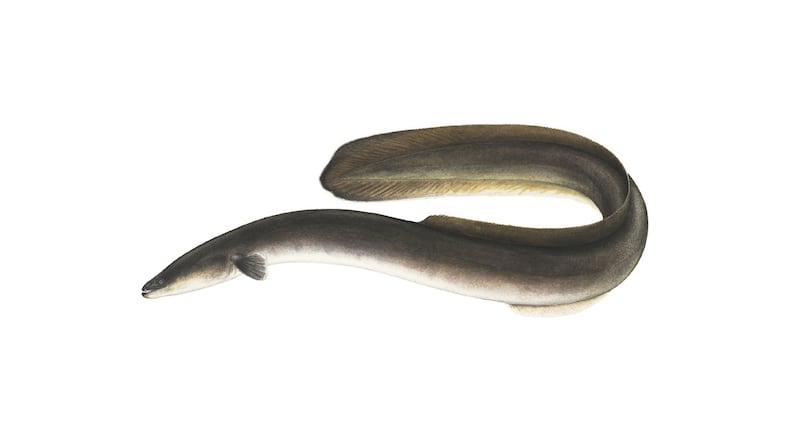At a boat landing along the Ocmulgee River in Montgomery County in South Georgia the other day, I stopped to speak to a couple of fishermen.
“We just caught an eel; first one we’ve seen in a long time,” said one of them, who added that he and his buddy “had quite a time” unhooking the squirming creature and tossing it back into the river.
From their description of the “fish” — snakelike, yellowish gray, tiny fins, maybe 2 feet long — it obviously was an American eel, the only native freshwater eel in Georgia’s rivers and, for that matter, in all of North America. Freshwater, though, is not entirely correct, because much of the eel’s life cycle is spent in the Atlantic Ocean.
Its life cycle, in fact, is what makes the American eel one of Georgia’s most fascinating creatures.
After years of growing and maturing in freshwater streams or brackish areas of estuaries, adult American eels migrate to the Atlantic and instinctively head to spawning waters in the Sargasso Sea, a vast ocean area of some 2 million square miles between the Azores and the Bahamas. Eels from Europe and other regions also go there to spawn.
Once spawning occurs, adult male and female eels die. The small larvae from the spawning are carried via winds and currents to coastal waters off North America, including Georgia, where, after a year or so, they develop into young eels known as “glass eels” and then into “elvers.”
Elvers develop into juveniles called “yellow eels.” Some yellow eels will stay in brackish water areas of estuaries, such as Georgia’s Altamaha Sound; others will go far upstream to freshwater areas of rivers, creeks and lakes, where they’ll remain until they are sexually mature — which may take five to 30 years. At some point, sexually mature adults migrate back to the Sargasso to produce another eel generation.
American eels once were plentiful in Georgia’s freshwater streams. Many migrated upriver as far as Atlanta in the Chattahoochee River, but hydroelectric dams built later on the river and other streams blocked the eels’ migrations and their numbers have dwindled.
IN THE SKY: From David Dundee, Tellus Science Museum astronomer: The moon will be last quarter on Monday. Venus sets in the west a few hours after sunset. Jupiter and Saturn are in the east at dark.
Charles Seabrook can be reached at charles.seabrook@yahoo.com.
About the Author
Keep Reading
The Latest
Featured

